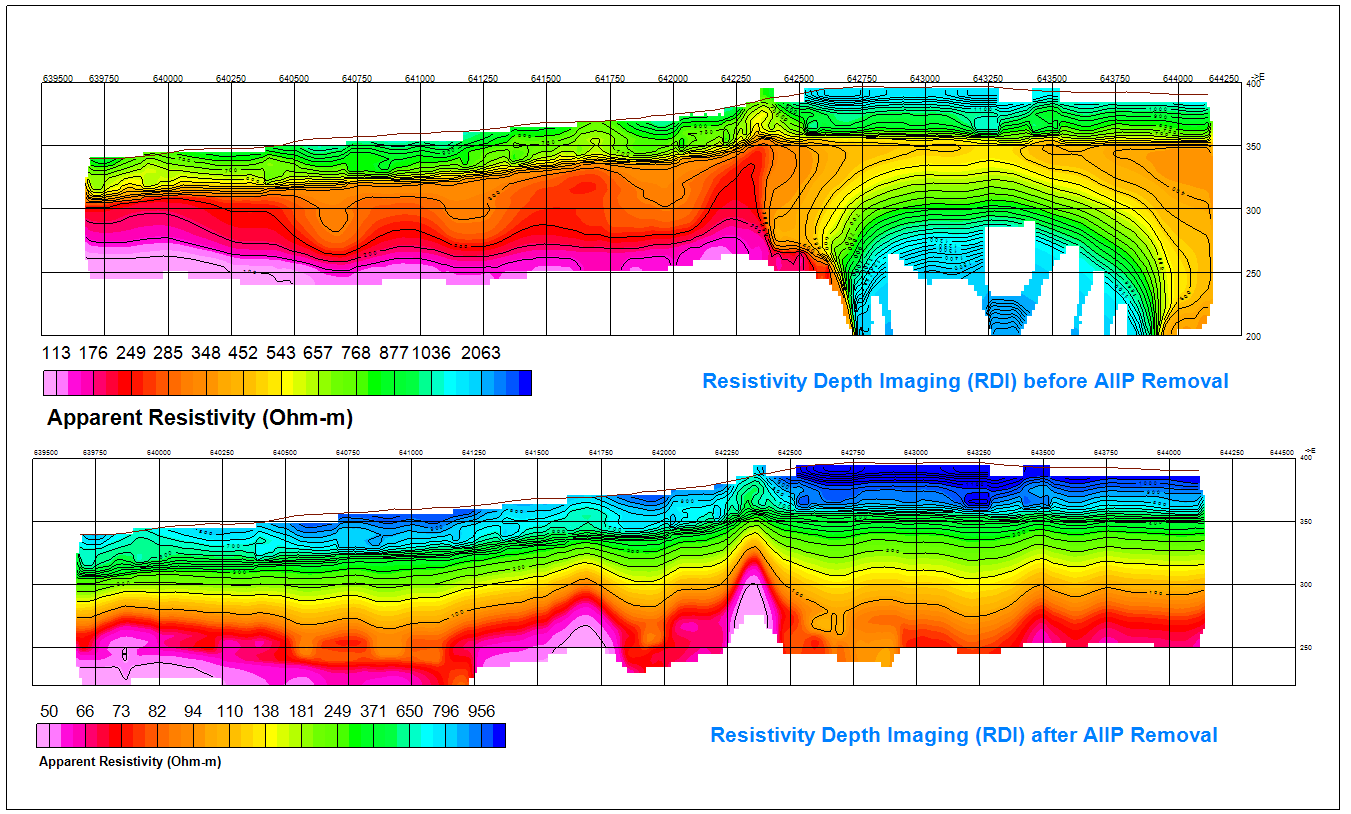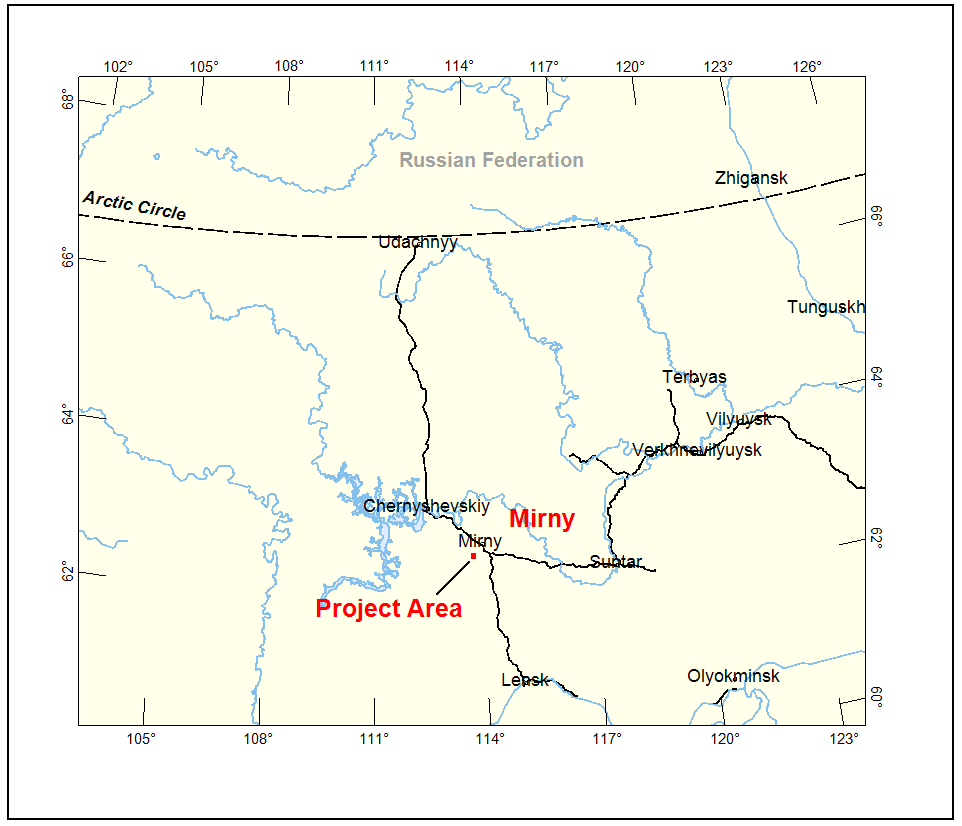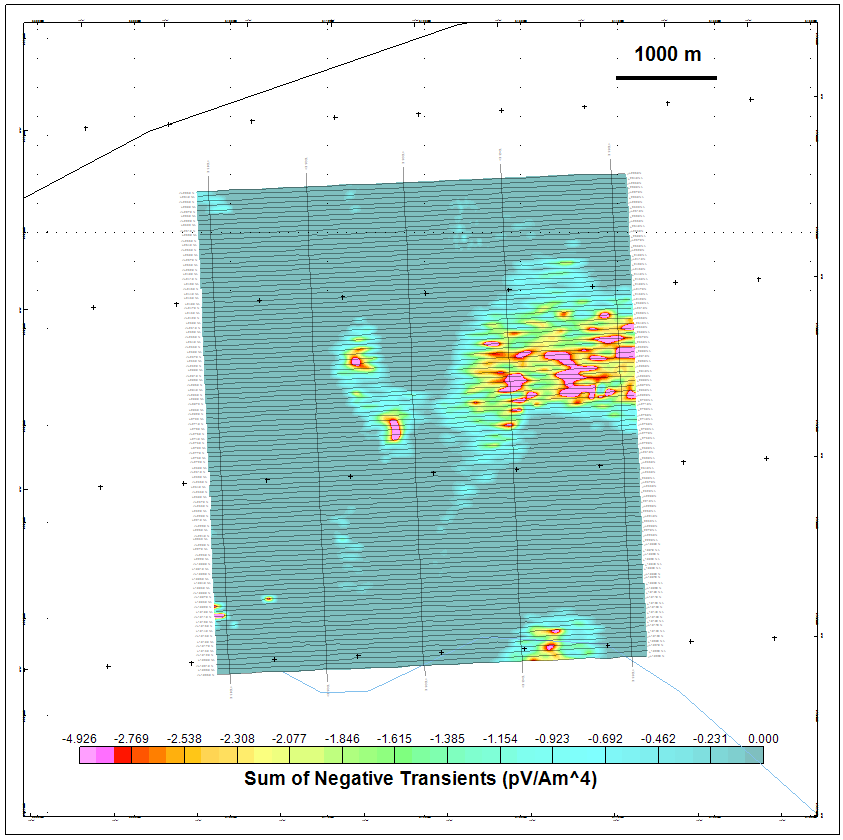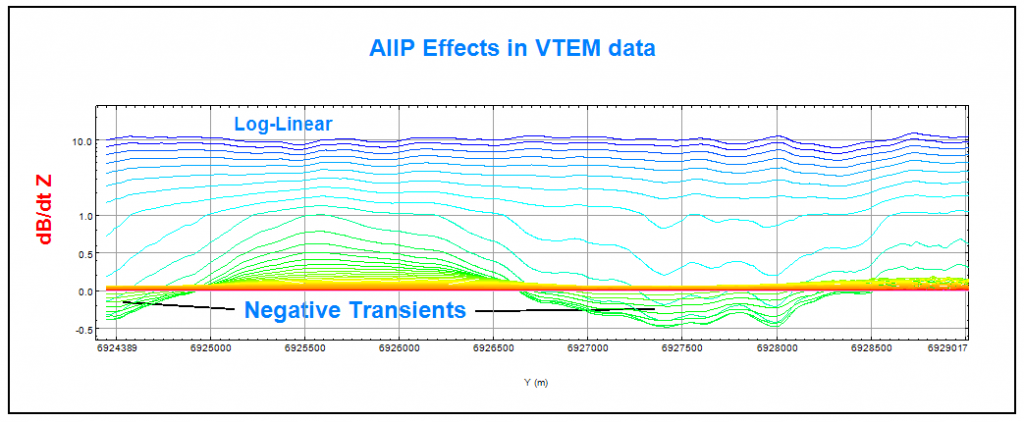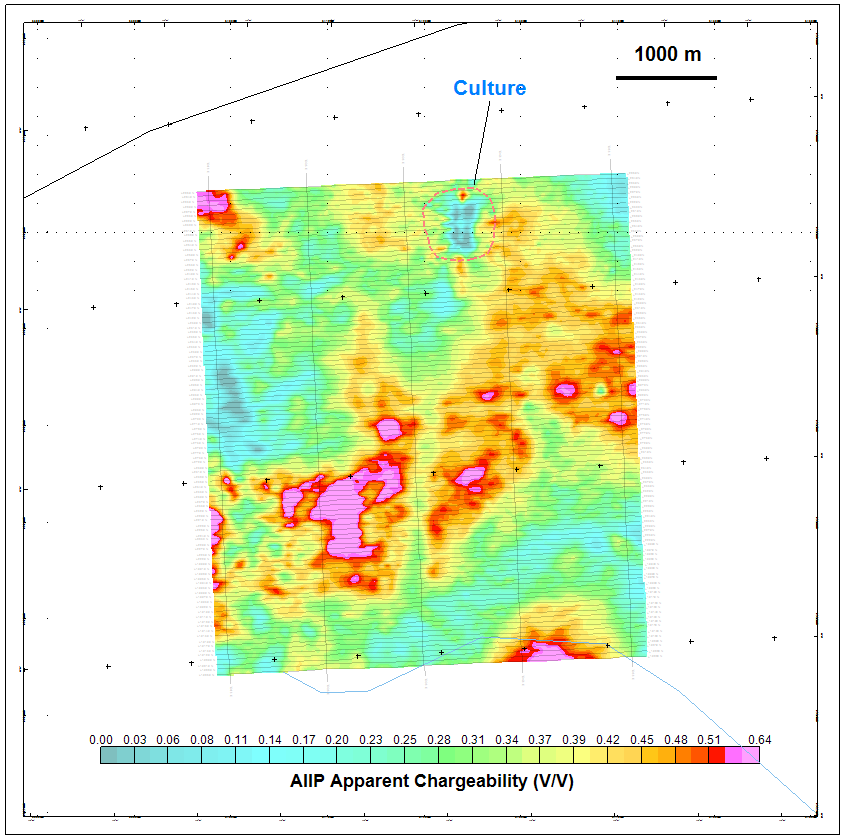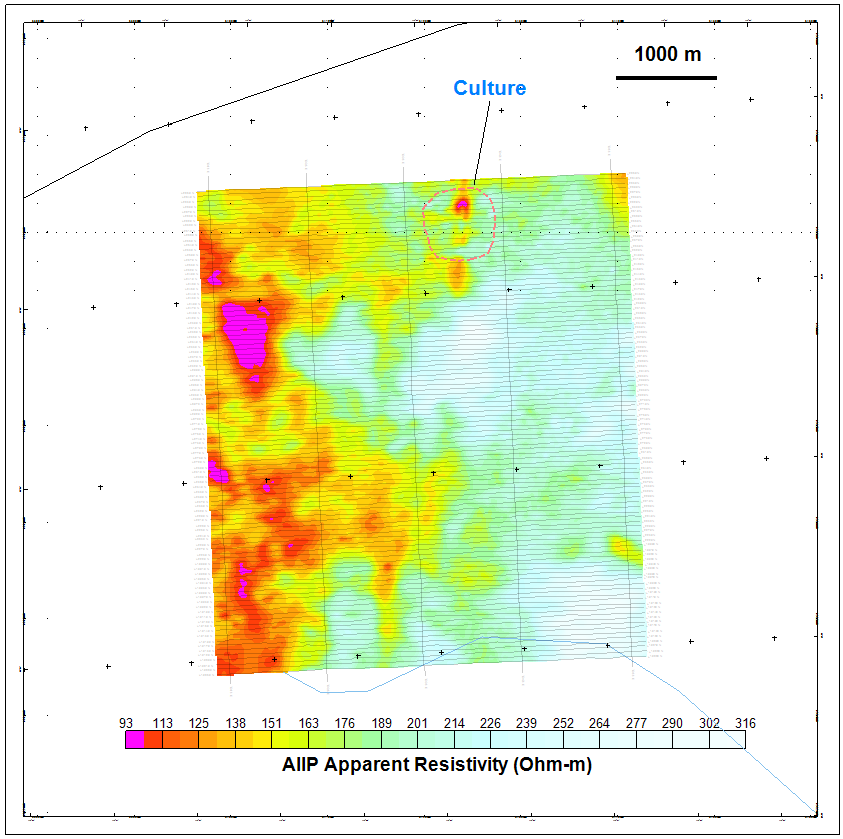For a PDF click here.
EXTENDED ABSTRACTS OF THE 85TH SEG ANNUAL MEETING AND INTERNATIONAL EXHIBITION 2015.
Awarded Best Paper in the Mining and Geothermal Sessions
BIOGRAPHY
Karl Kwan is a senior geophysicist with expertise in geophysical data inversion, software design and interpretation. Alexander Prikhodko is interpretation manager and Jean Legault is chief geophysicist. All three are based at the Geotech Ltd. head office in Aurora, just north of Toronto, Canada. Evgeniy Goncharov is the chief geophysicist of ALROSA in Mirny, Russia.
SUMMARY
Airborne inductively induced polarization (AIIP) effects, in the form of numerous negative transients, have been observed in the VTEM™ helicopter time-domain EM (TDEM) data from Mirny, Russia. The survey area is located in the continuous permafrost zone. Inductively induced polarization (IIP) effects in ground TDEM data had earlier been reported from the same region.
VTEM data reflect mainly two physical phenomena in the earth: i) electromagnetic induction and ii) airborne inductively induced polarization (AIIP) related to the relaxation of polarized charges in the ground. Typical AIIP effects in the VTEM data from Mirny corrupt only the early to mid-time channels, from 55 us to 400 us. Moreover, the earliest few time channels, from 18 us to 48 us, are not affected by AIIP, because the IP effect takes a finite time to build up. Cole-Cole analysis of the AIIP affected VTEM data showed that the frequency factor and the time constant are close to 0.8 and 0.0001s, respectively. Since the earliest time channel data are not affected by AIIP, the resistivity of the shallow ground can still be precisely determined. As a result, the purely inductive VTEM decay can be accurately modelled and used to remove the AIIP effect from later time-channels.
Keywords: Airborne Inductively Induced Polarization, AIIP Removal, Permafrost, Mirny
INTRODUCTION
During September 2014, Geotech Ltd. carried out a helicopter-borne Versatile Time-domain Electromagnetic (VTEM™; Witherly et al., 2004) survey over an area near Mirny, Russia (Figure 1), on behalf of the ALROSA mining company.
The survey area is located in the continuous permafrost region of Russia. Kozhevnikov and Antonov (2012) reported fast decaying inductively induced polarization (IIP) effects in ground TDEM data from the same region. AIIP effects in other airborne TDEM system from permafrost region in Canada were reported by Smith and Klein (1996).
VTEM data are mainly the time-domain electromagnetic responses of at least two physical processes in the earth: i) electromagnetic induction and ii) airborne inductively induced polarization (AIIP) related to the relaxation of polarized charges in the ground (Kratzer and Macnae, 2012 and Weidelt, 1982). Negative transients, attributed to AIIP effects, have been observed in VTEM dB/dt and B-field Z-component data (Kwan et al., 2015).
The VTEM data collected from Mirny contain negative transients, demonstrated by the sum of negative transients of dB/dt Z data shown in Figure 2. Warm colors are for higher negative sums.
Typical AIIP effects start at approximately 55 us (10th off-time channel) after the transmitter current turn-off, decaying more rapidly than normal induction and resulting in negative transients in early to mid-time channels, Figure 3. At roughly 400 us (24th off-time channel), the dB/dt Z data revert to normal inductive (positive) decay. Typically, the earliest few off-time channels, 4th to 9th, are not affected by AIIP, because the IP effect takes a finite time to build up (Kratzer and Macnae, 2012).
AIIP CHARGEABILITY MAPPING
The AIIP chargeability mapping algorithm used here is described in Kwan et al. 2015. The AIIP affected VTEM data are analyzed using the Cole-Cole relaxation model (Cole and Cole, 1941) described by Pelton et al. 1978 and shown in equation (1). The AIIP algorithm requires pre-determined frequency factor c, while the chargeability m and time constant τ are allowed to vary. The algorithm produces AIIP apparent chargeability and resistivity.
In equation 1, ρο is the DC resistivity in ohm-metres, m (0 ≤ m ≤ 1.0) is the chargeability, in units of V/V, τ is the time parameter in seconds, ω = 2piƒ, and c (0 ≤ c ≤ 1.0) is the frequency factor (dimensionless). These four parameters (ρ0, m, τ and c) are characteristics of a polarizable ground.
The determination of frequency factor c and time constant τ for selected VTEM data is carried out by interactive forward modelling software, using the Airbeo 1D inversion code from CSIRO (Raiche, 1998; Chen and Raiche, 1998). For a given VTEM decay, the program computes a synthetic TDEM decay for a half-space with user specified Cole-Cole parameters, and then computes the root-mean squares (RMS) error between the two. The selections of Cole-Cole parameters are performed interactively on all four parameters (ρ0, m, τ and c). The forward modelled and the measured data are displayed instantaneously, as well as the RMS error. The results of Cole-Cole forward modelling of selected VTEM decays are shown in Figure 4.
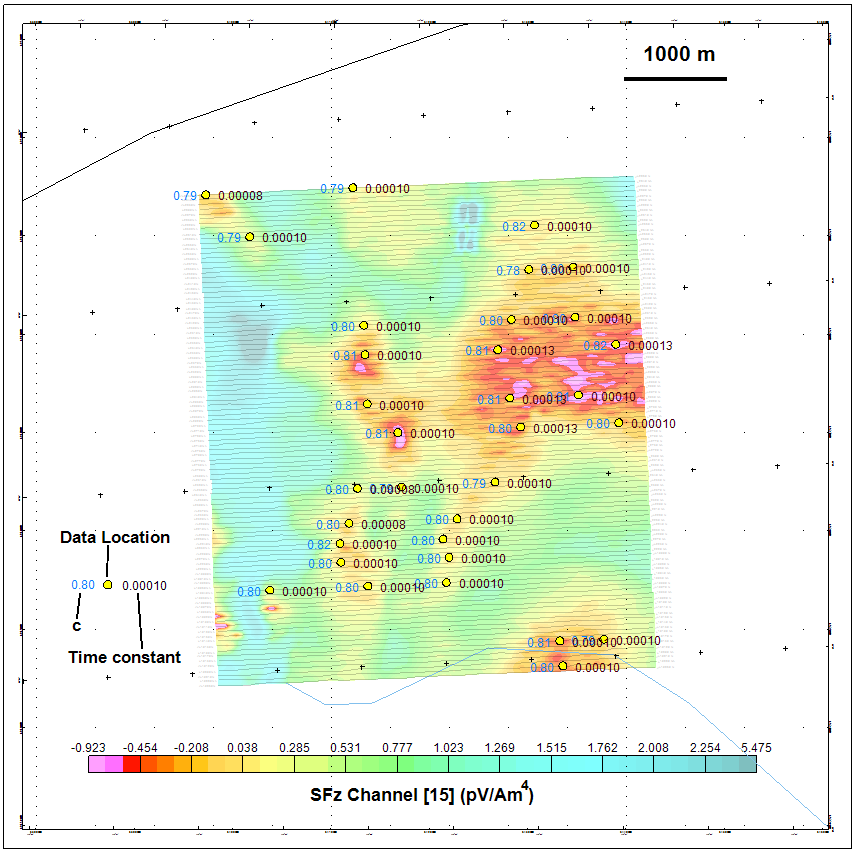
Figure 4: Frequency factors and time constants of selected VTEM data, over dB/dt off-time channel 15
The mean of the derived frequency factors is 0.8, and the average of time constants is 0.0001s. The Cole-Cole analysis of ground TDEM data by Kozhevnikov and Antonov (2012) gave the value of 0.8 for the frequency factor c, and a range of 0.00005 to 0.000083s for the time constant. Thus the airborne AIIP and ground TDEM analyses are in agreement.
Because the frequency factor c and time constant t don’t vary significantly in the survey area, a modified algorithm was used to extract the two (ρ0, m) parameters from the VTEM data. The modified algorithm uses fixed (τ, c), i.e., τ being set at 0.0001s and c given a value of 0.8 respectively. The algorithm determines ρ0 by a series of forward modelling to fit the earliest time channel data (4th). The chargeability parameter m is found by simple search of the best fit model.
The AIIP apparent chargeability and resistivity are shown in Figure 5 and Figure 6. It is quite obvious that more than 50% of the ground is chargeable and is presumed to be related to permafrost (Kozhevnikov and Antonov, 2012).
AIIP REMOVAL
Negative transients in the VTEM data make it difficult to recover the true geo-electrical section of the ground. We have devised a method to reduce, in the first order sense, the AIIP effects in VTEM data, tailored specifically for the VTEM data from Mirny. The method recognizes the fact that the earliest available time channels and late time channels are unaffected by AIIP, and therefore, the VTEM data in those channels will remain unchanged. The removal of IIP effects in ground TDEM data has been previously demonstrated by Elliot (1991).
The AIIP removal algorithm first computes the difference between the observed VTEM decay and the calculated VTEM half-space decay. The half-space resistivity is determined using the first available off-time channel. The decay differences in the early time channels are positive, become negative if there are AIIP effects during the late-early and middle time channels, and finally change to positive in late time channels.
The negative values in the decay difference identify the time-channels affected by AIIP. The AIIP affected time channels in the observed VTEM decay are replaced by the calculated half-space decay. Thus the AIIP removals are first order corrections using half-space models. The method is trying to restore the true inductive VTEM responses of the ground at shallow depths.
Results of AIIP removal of a VTEM line at Mirny are shown in Figure 7.
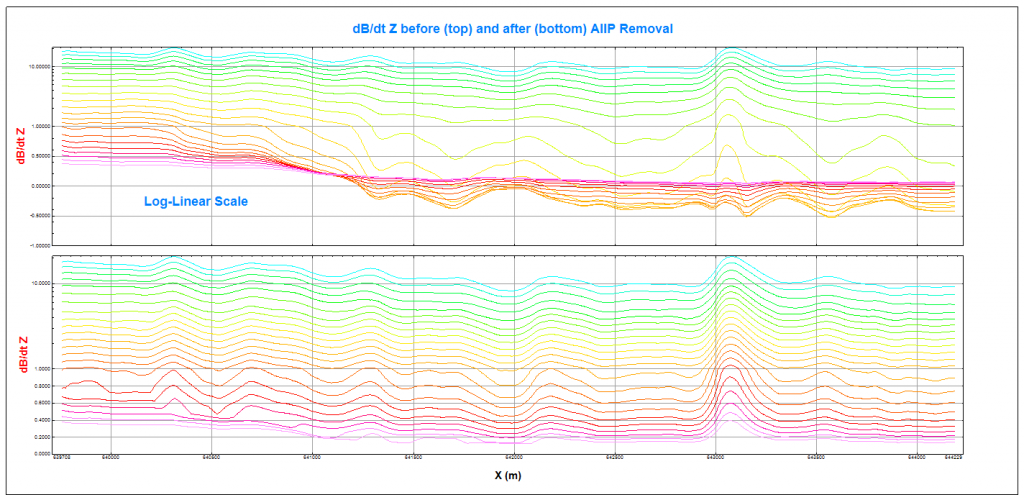
Figure 7: dB/dt Z profiles before (top) and after (bottom) AIIP removal, of off-times from 18us to 400us.
Resistivity Depth Imaging (RDI), based on the method described by Meju 1998, is applied to the VTEM data before and after AIIP removal. RDI results of a selected line are shown in Figure 8.
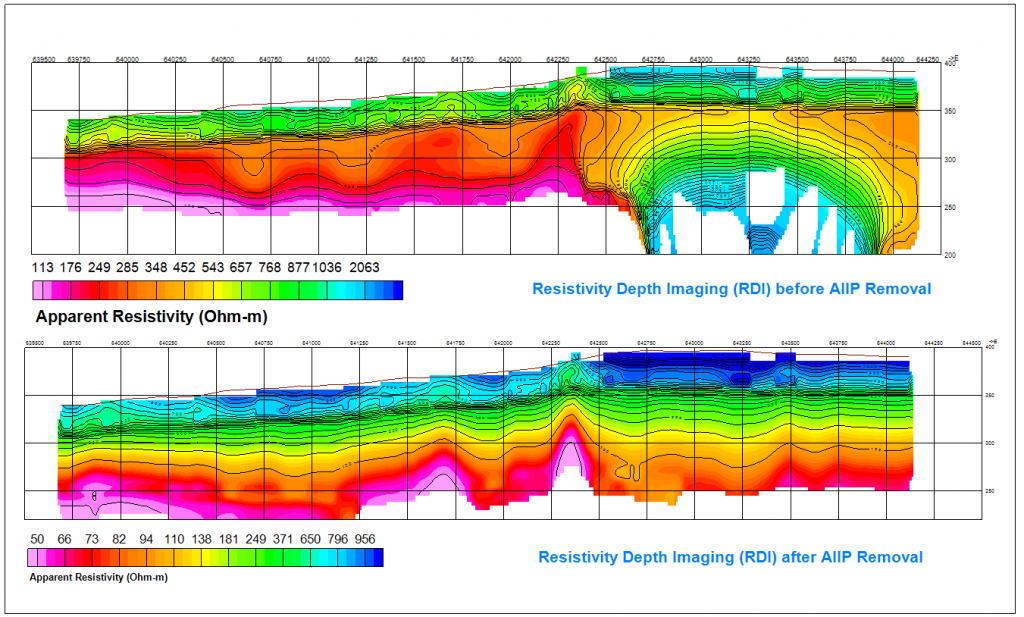
Figure 8: RDI resistivity-depth images before and after AIIP removal using dB/dt Z-component data from 18us to 400us off-time.
DISCUSSIONS
According to the circuit analog of interfacial impedance in electrode polarization (Ward, 1990), there are two paths by which current may be carried across an interface, the Faradaic path (metallic or clay particles) and the Non-Faradaic path. When c is close to 1, the major part of the electric current is carried across the Non-Faradaic path; hence the interfacial impedance varies as ƒ-1 (Debye decay).
When c is less than 0.5 and the frequency range widens to cover more low frequencies, more and more current is carried via the Faradaic path. So the interfacial impedance varies as ƒ-1/2 (Warburg decay) to ƒ0(Ward, 1990). For VTEM data from Mirny, the interfacial impedance varies approximately as ƒ-0.8, indicating that the electric current is mostly carried across the Non-Faradaic path.
CONCLUSIONS
Numerous negative transients in the early to mid-time channels were observed in the VTEMTM data from Mirny, Russia. The negative transients are attributed to AIIP effects in these permafrost terrains. Cole-Cole analysis of the AIIP affected VTEM data has revealed the spectral characteristics of the ground, which possesses high frequency factor c
value of 0.8, indicating that the electric current path is Non-Faradaic
A method has been developed specifically to remove the AIIP effects in the VTEM data from Mirny, Russia, taking into consideration the fast decaying nature of the negative transients. RDI resistivity-depth results of the VTEM data before and after AIIP removal appear to validate the method for the recovery of geo-electrical section of shallow ground.
ACKNOWLEDGEMENTS
We greatly appreciate the permission granted by ALROSA to use the VTEM data for this study.
REFERENCES
Chen, J., and Raiche, A., 1998. Inverting AEM data using a damped eigenparameter method: Exploration Geophysics, 29, 128–132
Cole, K. and Cole R., 1941: Dispersion and absorption in dielectrics, Part I. Alternating current characteristics: Journal of Chemical Physics, 9, 341-351.
Elliot, P., 1991: An empirical procedure for removal of polarization effects observed in TEM field data, Exploration Geophysics, 22, 575-582.
Kozhevnikov, N.O. and Antonov, E. Yu., 2012: Fast-decaying inductively induced polarization in frozen ground: A synthesis of results and models: Journal of Applied Geophysics, 82, 171-183.
Kratzer, T. and Macnae, J.C., 2012: Induced polarization in airborne EM, Geophysics, 77, E317-327.
Kwan, K., Prikhodko, A., Legault, J. M., Plastow, G., Xie, J. and Fisk, K., 2015: Airborne Inductive Induced Polarization Chargeability Mapping of VTEM data, ASEG, Extended Abstracts, 5 p.
Meju, M.A., 1998: A simple method of transient electromagnetic data analysis, Geophysics, 63, 405-410.
Pelton, W.H., Ward, S.H., Hallof, P.G., Sill, W.R., and Nelson, P.H., 1978, Mineral discrimination and removal of inductive coupling with multi-frequency IP: Geophysics, 43, 588–609.
Raiche, A., 1998, Modelling the time-domain response of AEM systems: Exploration Geophysics, 29, 103–106.
Smith, R.S. and Klein, J., 1996. A special circumstance of airborne induced polarization measurements: Geophysics, 61, 66-73.
Ward, S., 1990. Resistivity and Induced Polarization Methods, SEG Investigation in Geophysics #5 Geotechnical and Environmental Geophysics, Volume I, p.147.
Weidelt, P., 1982: Response characteristics of coincident loop transient electromagnetic systems, Geophysics, 47, 1325-1320.
Witherly, K., Irvine, R., and Morrison, E.B., 2004, The Geotech VTEM time domain electromagnetic system: SEG Expanded Abstracts, 1217-1221.
Download a PDF of the Extended Abstract: 0104 AIIP Effects and Removal From VTEM Data Mirny, Russia March 30 2015
View it on the Exploration Geophysics Info Website Here: http://explorationgeophysics.info/?p=3878
